December 14, 2013
I spent a half hour or so with a small flock of American robins deep in the mesic flatwoods of Bear Swamp Road, in Tiger Bay State Forest last week. A little bit earlier in the morning I had seen another small flock in a cypress swamp in the nearby Woody Tract. Aside from a couple of small flyover flocks, this was the first time I’d spent much time watching robins this fall.
If there’s one bird nearly every North American with a functioning brain can identify correctly, the American robin would have to be a good candidate for that honor. Yet despite their abundance and extreme compatibility with some forms of human-modified landscapes, it’s surprising to me how little I really know about robins. Especially during their winter residence in Florida. They can be incredibly abundant and conspicuous at times, yet surprisingly shy and secluded at others. The winter behavior of robins strikes me as bordering on schizophrenic.
My first encounters with robins were probably like those of most people – as breeding birds in suburban habitats. The sight of a robin running across a well-manicured lawn, stopping, cocking the head to one side as if listening, and then pulling out an earthworm like a strand of spaghetti is iconic for this species. A pair sometimes nested in a thicket of vines just outside the back door of the house in Virginia where I grew up, and the constant coming and going of both parents bringing food to the insatiable young, then carrying away their feces in nice tidy little membrane-bound spheroids taught me how demanding the work of passerine parents taking care of nestlings can be. Spot-breasted fledglings follow their parents across the lawn begging for free food when they are fully capable of taking care of themselves. Their departure in the fall, and more gratifying, their return in the spring, were highly anticipated events for me as I was just beginning to sync my life to that of the activity patterns of the birds that enthralled me.
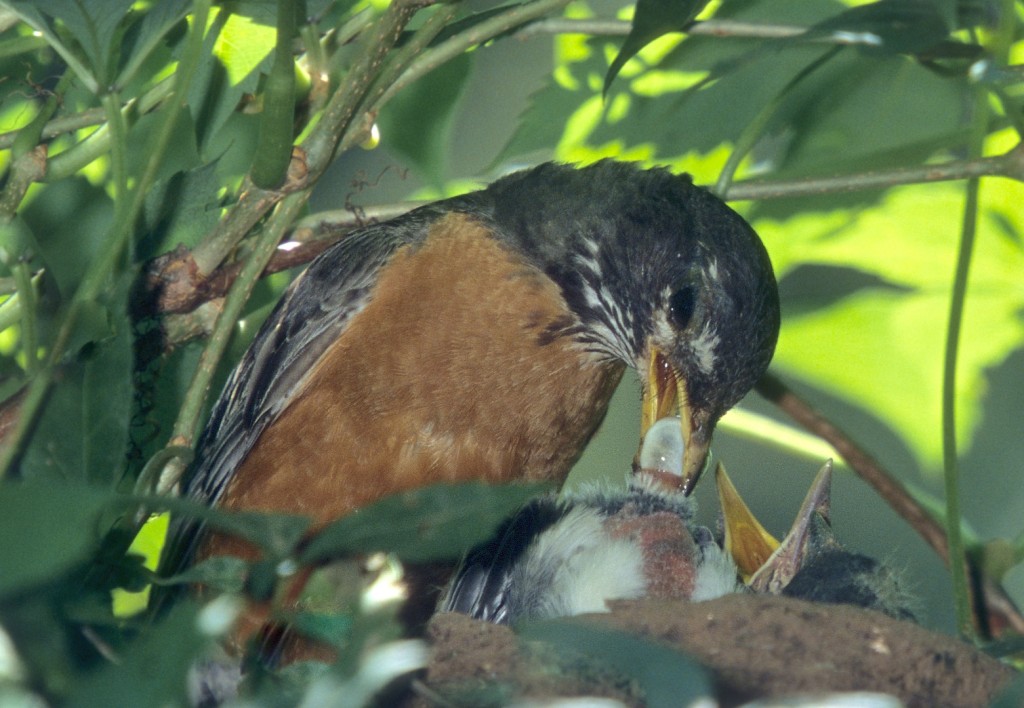
Poop removal detail. She takes the fecal sac directly out of the little bird’s bum. Scanned from a slide taken in northern Virginia.
It wasn’t until I moved to Florida that I saw the other side of their lifestyle and life history. The return of the robins is still a signature event in the phenology of Florida birds, but here it occurs in late fall and early winter, as huge flocks of robins move into the state to spend the winter. It’s their winter behavior that intrigues me most now. During their stay in Florida, between about October and April, they behave as if they were two different species.
Though Stevenson and Anderson point out in their essential book The Birdlife of Florida that migration of robins in Florida peaks in October, that seems early to me. Most years I don’t first see robins until well into November. In the 7 years I did weekly bird censuses at Emeralda Marsh Conservation Area in Lake County, the earliest I ever saw American robins was the 1st week of November, and I usually didn’t start seeing them in significant numbers until much later, well into December and January.
Part of the biphasic nature of wintering robins in Florida is their relative inconspicuousness during the first month or two they are here. I usually see my first robins as small to medium flocks of anywhere from a few to a couple dozen birds, flying in a very determined fashion fairly high. They are on their way to somewhere. A few calls from the passing flock often first clue me in to their presence. I’m especially likely to see these flocks early or late in the day, when the birds are dispersing from or returning to their nightly roosts. Communal roosting is a big part of the lifestyle of robins, during both the breeding and non-breeding seasons. Male robins during the breeding season leave their mates at the nest each night and congregate to roost with other hooked-up males. I’d love to be a fly on the branch at one of those roosts to hear what these hen-pecked cocks have to say about their mates. During the winter, mixed-sex roosts of American robins can number in the hundreds of thousands.
While in Florida, robins feed heavily on fruits; as much as 90% of their diet in winter can come from fruits of as many as 50 genera of plants. Their frugivorous behavior may have a lot to do with their markedly variable behavior.
During November and much of December in most years, the occasional flyover flocks and the even less frequently seen feeding flocks are my typical experience of robins. When I find feeding flocks, they are nearly always in fairly dense, closed-canopy hammock or swamp forest, where the birds are usually pretty quiet and quite easily spooked. Sometimes they are down on the ground hunting for invertebrates, and sometimes up in the treetops, sometimes in the act of digesting fruits. Robins regurgitate the seeds of some of the larger-pitted fruits they eat, and there’s a very stereotyped sequence of behavior leading up to the egestion of a pit, culminating with a lot of convulsive gular movements and the jettisoning of the seed. My impression of robins during this time of year is much more that of a more typical thrush such as a wood thrush or hermit thrush – fond of deep woods and a bit wary and mysterious.
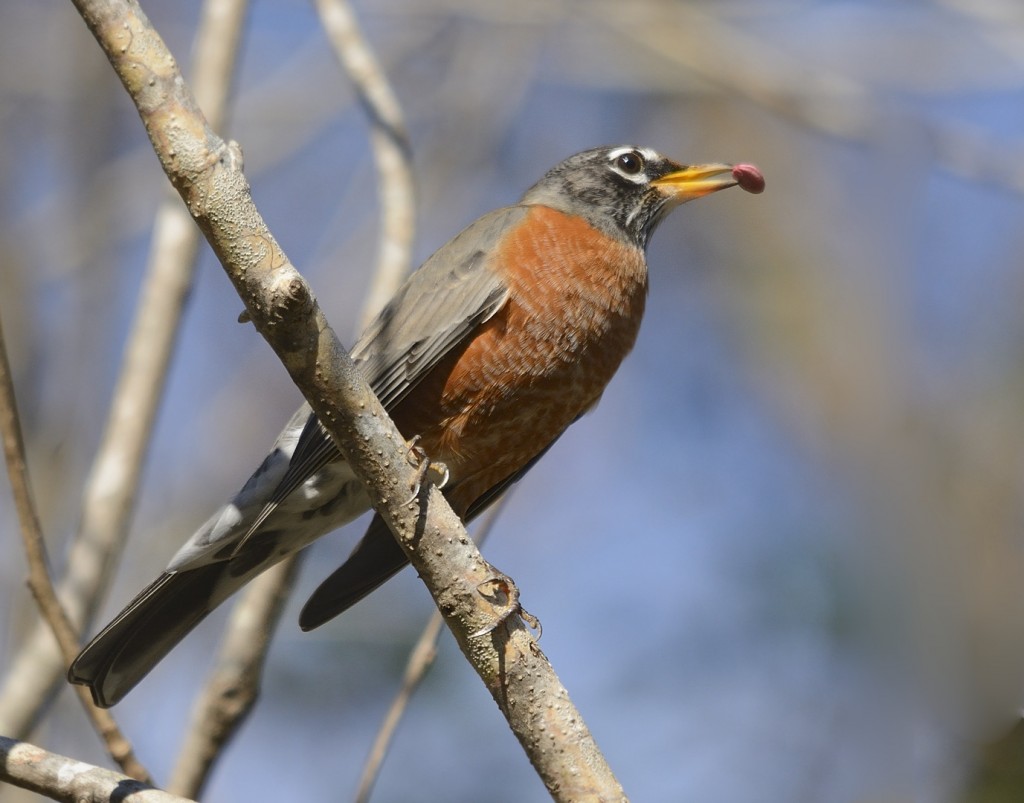
Yakking up a fruit pit. Renowned frugivorous bird expert Dr. Stewart Skeate was unable to ID the fruit from which this seed came.
But not too much later, perhaps in late January or February, these big flocks of robins show a remarkable behavioral shift – they go urban. They appear in large numbers in heavily anthropogenic habitats. In DeLand, they show up on lawns, in gardens, and in fruiting trees that still retain some of their crop. And they become dramatically more tolerant of human presence. On Stetson’s campus and in nearby residential areas they first go after the big inflorescences of sabal palms and a variety of other fruiting trees and shrubs. Horticultural hollies of various sorts are a favorite, as are the native hollies like dahoon (Ilex cassine) and gallberry (Ilex glabra), for the flocks that choose to remain in natural habitat.
Often accompanied by large numbers of cedar waxwings, these mass incursions into town and the coincident change in their behavior have to be one of the most spectacular natural history events to regularly occur in urban Florida environs. Lawns can be covered with flocks of dozens of robins, running every which way while eating inverts and picking up dropped fruits. Tree species with large fruit crops can be swarmed by flocks of hundreds of birds methodically harvesting a few trees at a time. Like many flock-feeding frugivorous birds, these aggregations of robins can be swirling maelstroms of activity, with individual birds never staying in one spot for more than a minute or two before moving on to a new branch. And unlike the standoffish woodland robins of November and December, these urban birds don’t seem to mind being around people that much.
Particularly during rain-free periods of a few days or more during Florida’s dry season, water can be a limiting commodity for these flocks of robins and waxwings. On my morning drives to work through lovely old residential neighborhoods along W. Minnesota Ave., during the few weeks when these two species invade the town it’s not unusual for me to see small mixed flocks of robins and waxwings at nearly every corner puddle that has accumulated from nearby lawn sprinkler systems. The little dudes sometimes get quite feisty over access to a small pool of water.
It’s just a joyous time of year to be in and around DeLand. Not only are the birds more obvious when in town, but they are also much more vocal and approachable. Sometimes you see and hear robins and waxwings nearly all day long, everywhere you go in or around town.
In late afternoons during these months, I often see large loose flocks of robins flying to the northeast, presumably converging on some huge roosting aggregation, perhaps somewhere in the forests of Lake Woodruff NWR or Ocala National Forest. At Emeralda, some mornings I saw continuous strings of robins flying in the same direction, presumably leaving a roost; these flocks sometimes numbered in the thousands.
And then as winter begins to wind down, almost overnight they seem to disappear. The pullout of the big wintering flocks occurred in February to March when I was censusing birds at Emeralda.
So the obvious unanswered question for me about the wintering behavior of robins in Florida is this: why the dramatic change in habitat and behavior in mid-late winter? Does the movement of robins into towns and suburban habitats at that time indicate that they have depleted most of the fruit crop in the woodland habitats, where it would seem that they would rather be? Seems a bit too simple to me, and I love simple explanations. And even if that is one of the driving factors, why the huge change in behavior, especially their tolerance of human proximity?
Even for incredibly common and easily observed birds like robins, it’s stunning how little we really understand about how they live their lives, and why.
I heard a small flock of robins flying over my house just bit earlier today, heading towards that big presumed roost to the north somewhere. They’re still in the mysterious phase of their Florida sojourn. What a treat it is to look forward to their upcoming schizoid break, knowing that within a month or two I’ll be able to immerse myself in the presence of the ubiquitous urban robins.
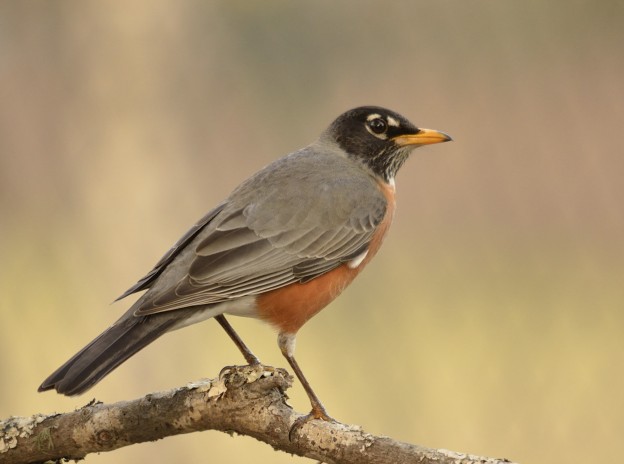
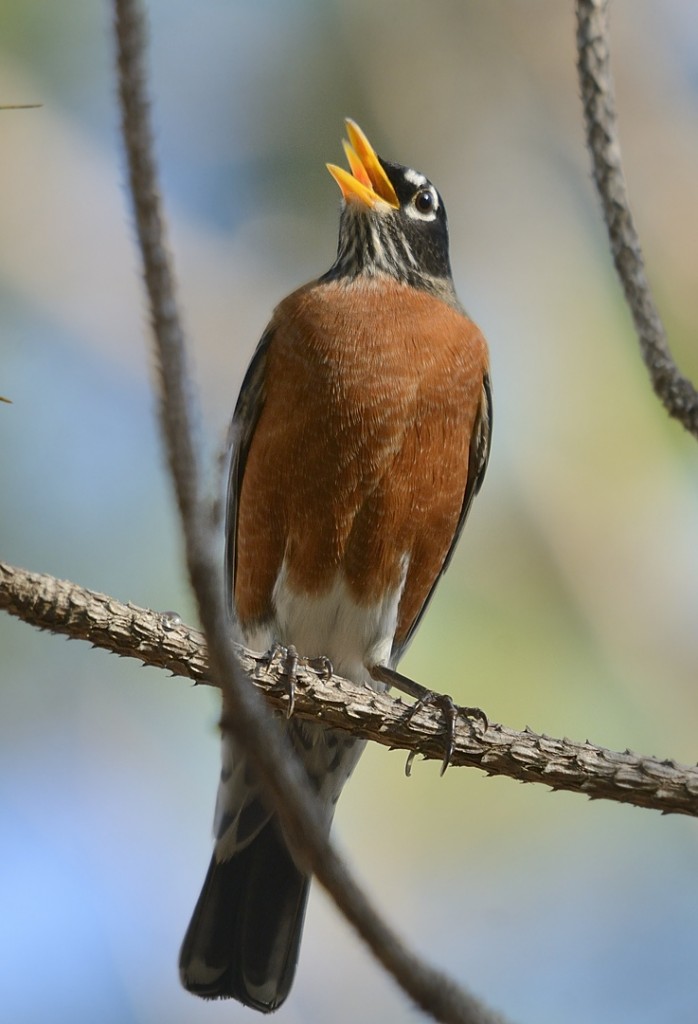
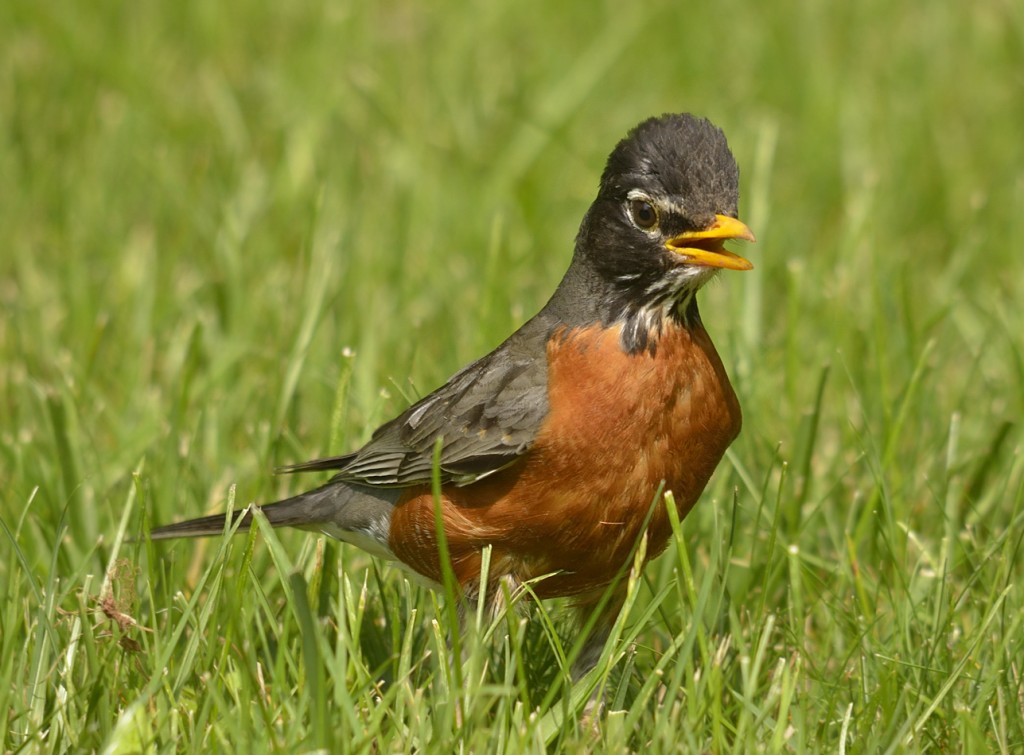
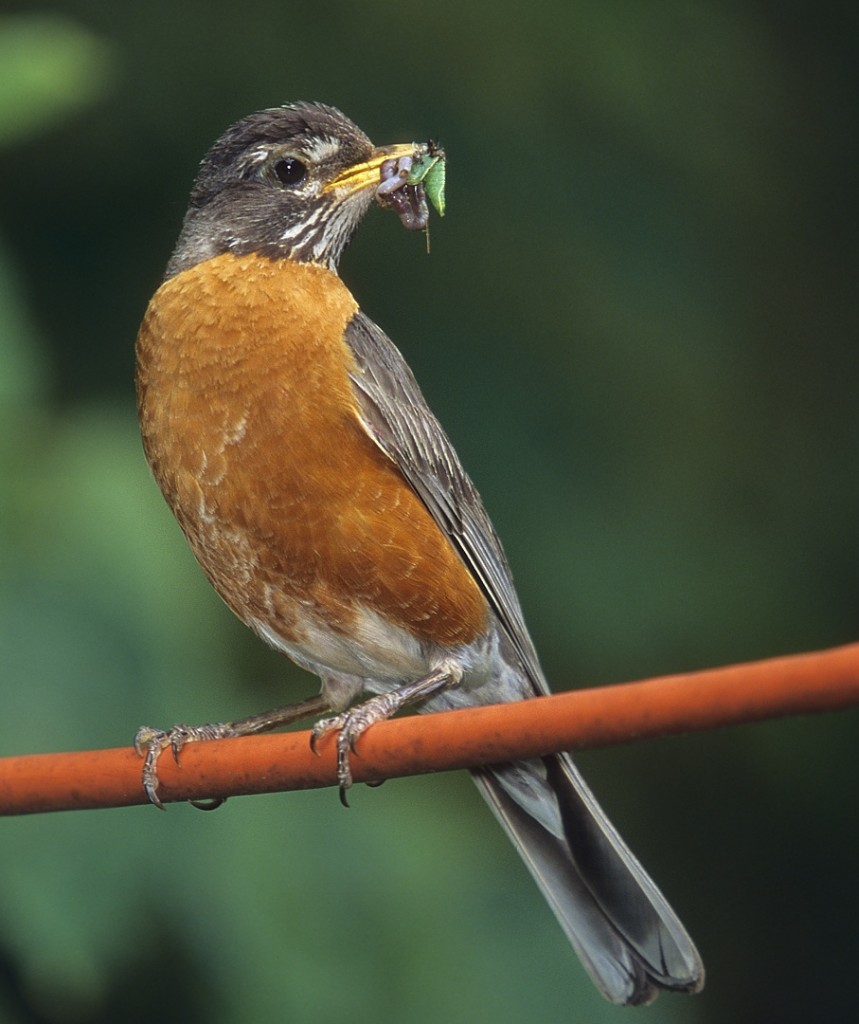
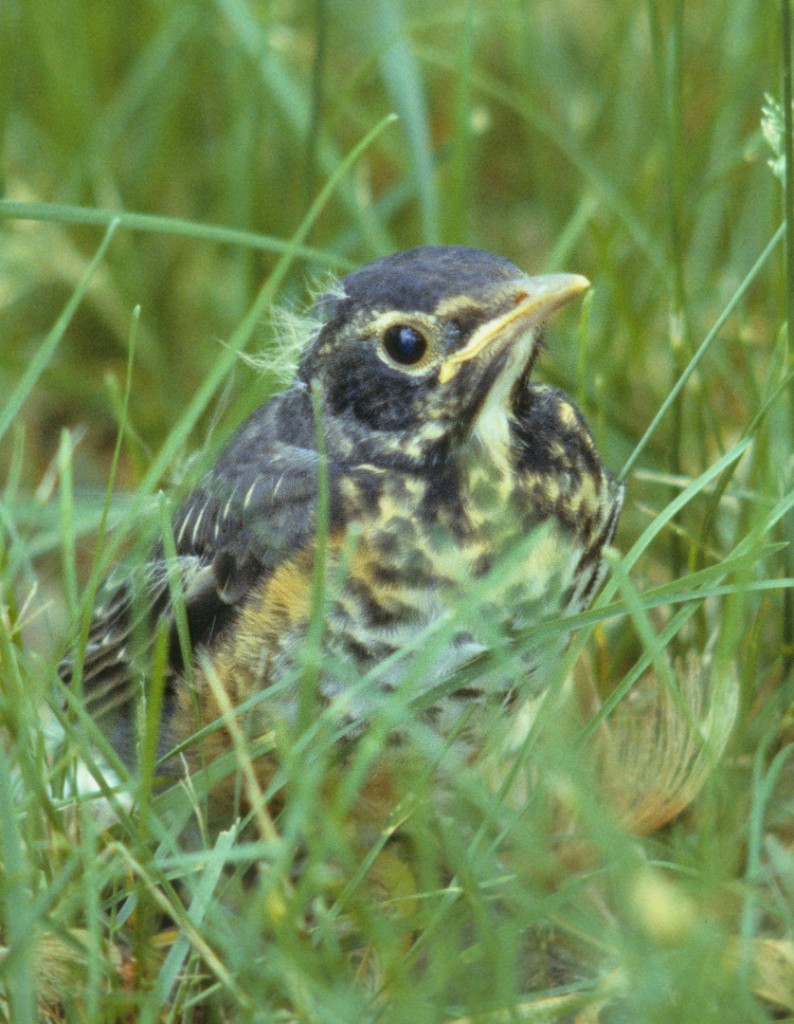


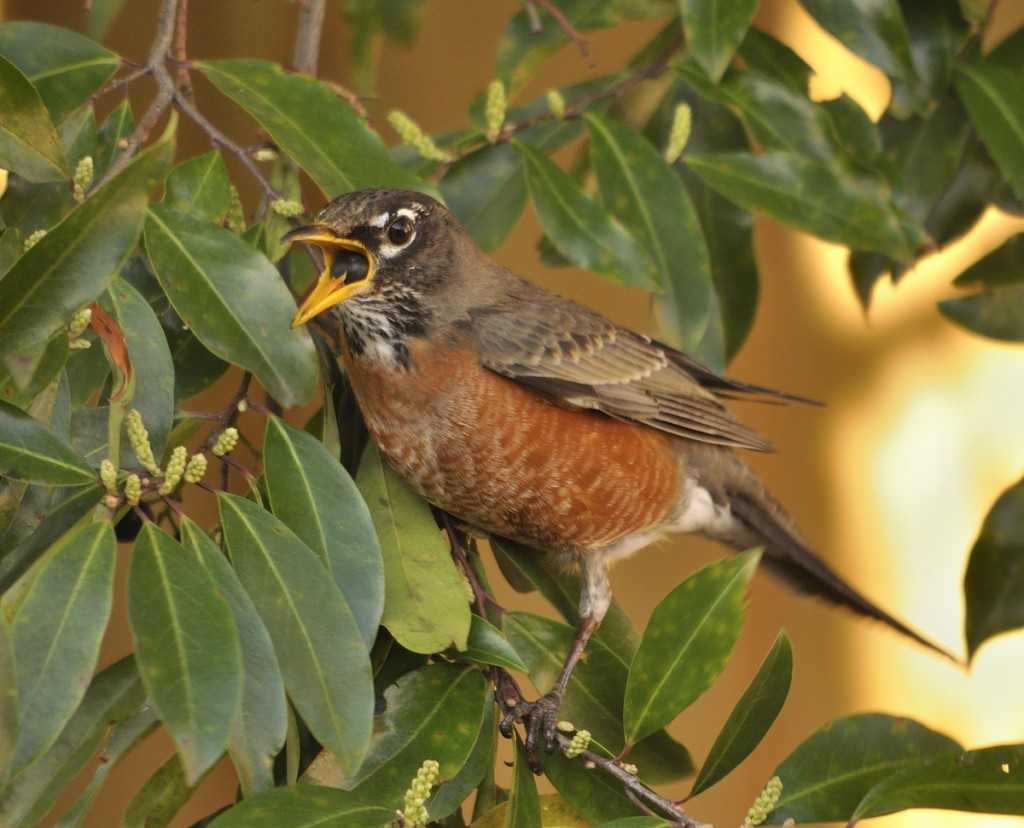
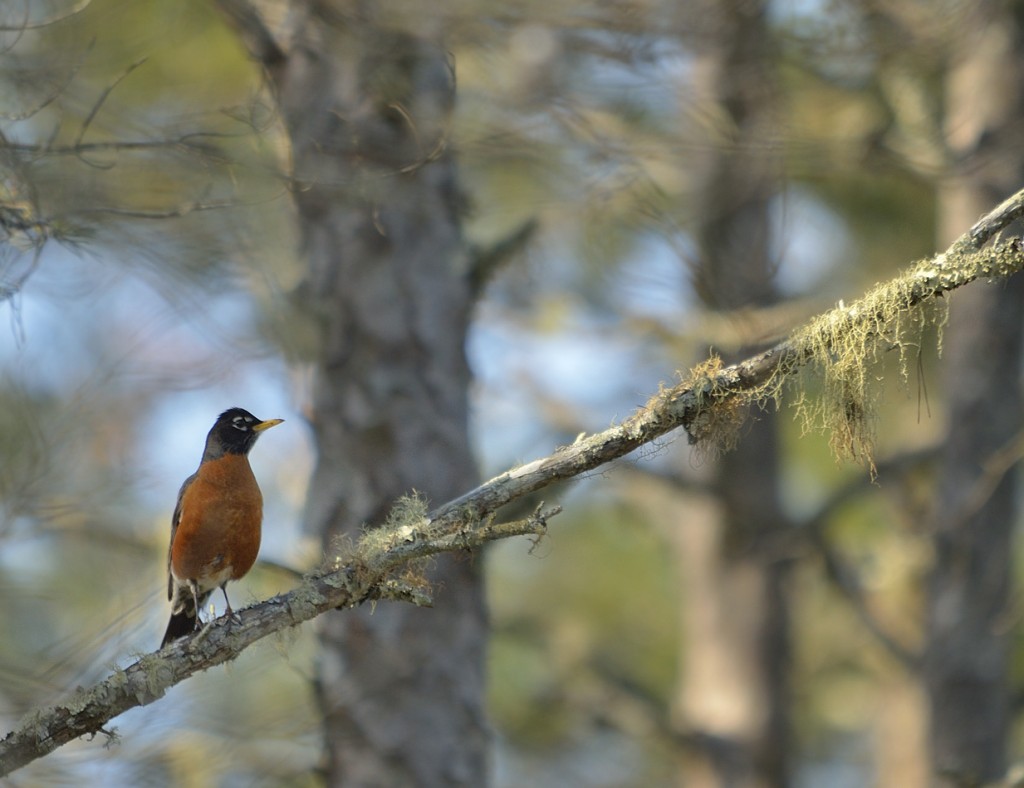
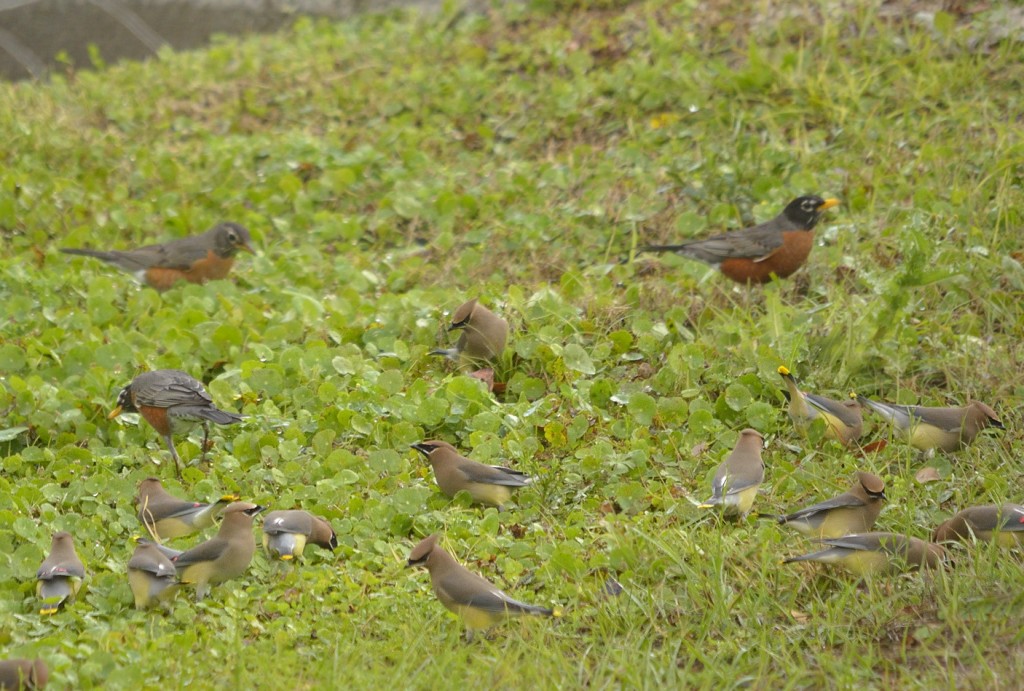
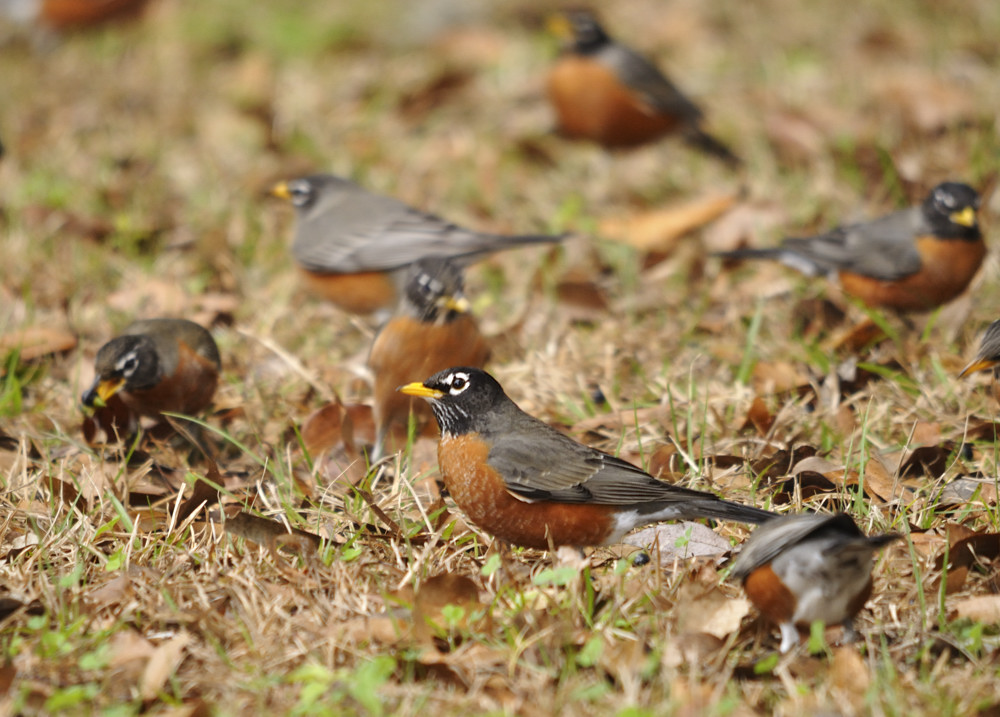
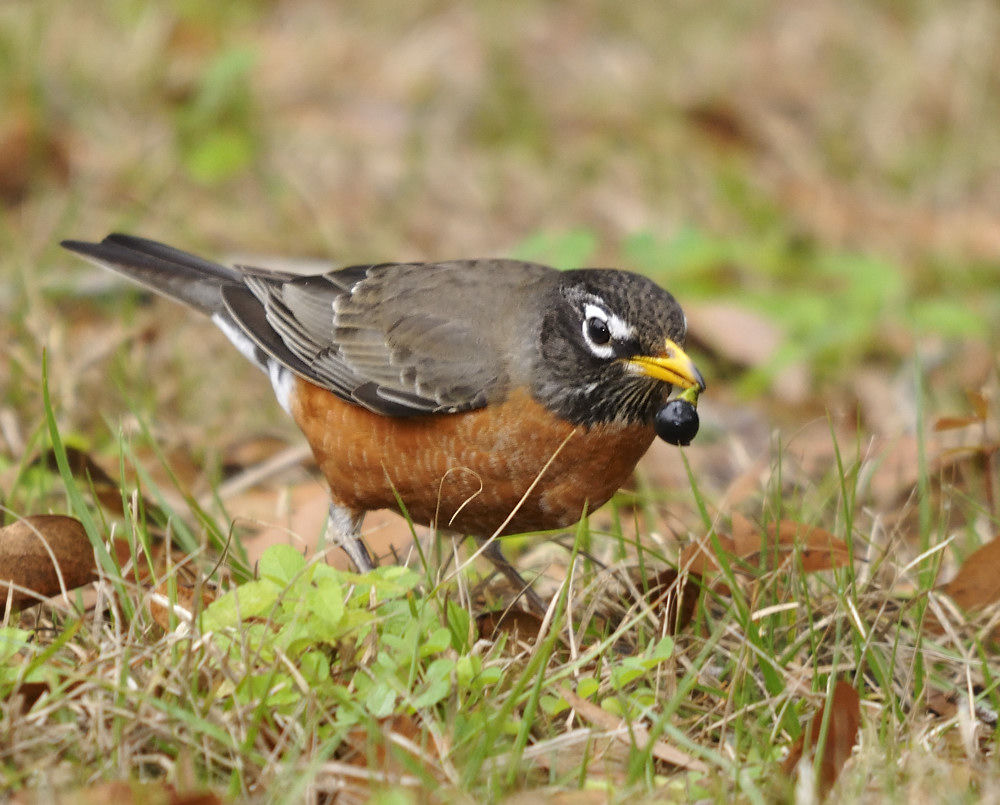
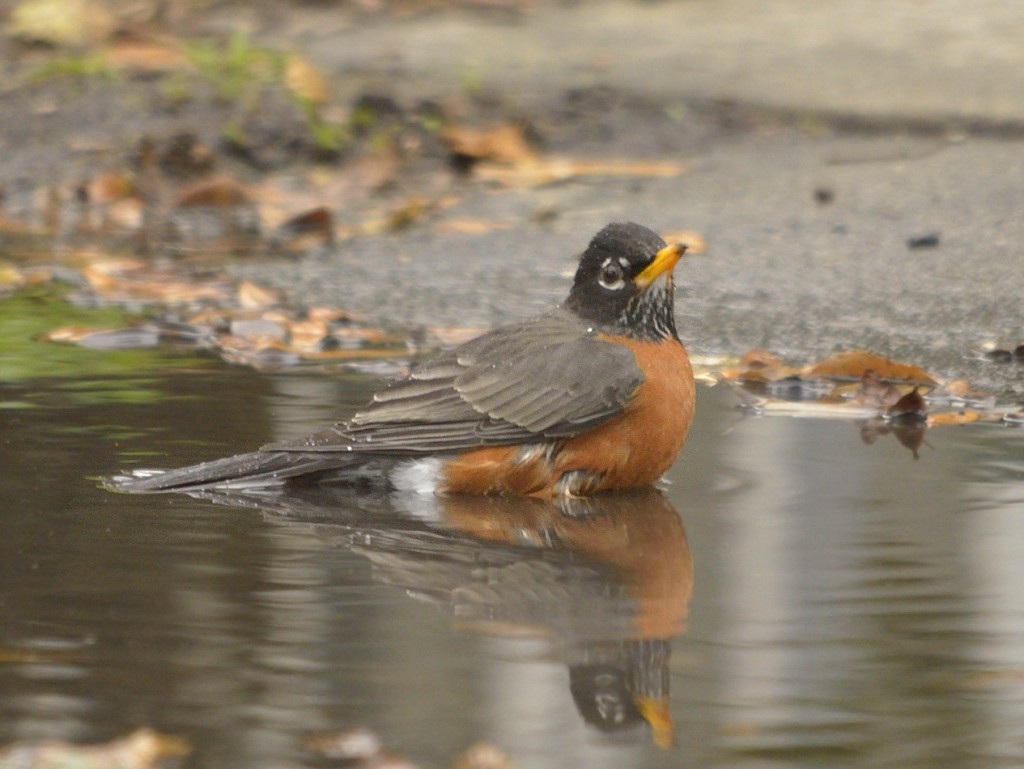
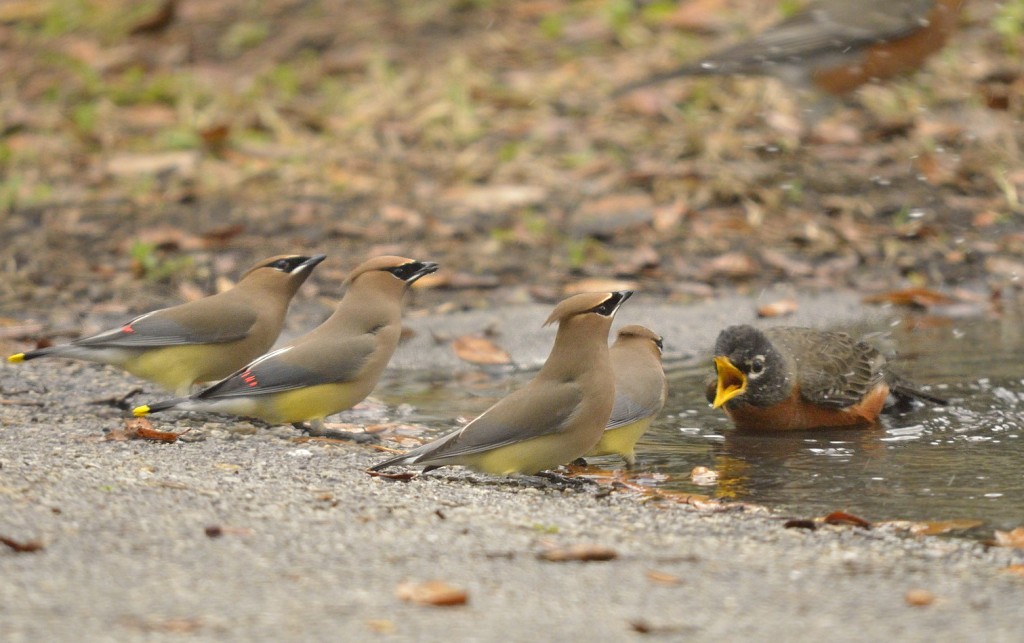
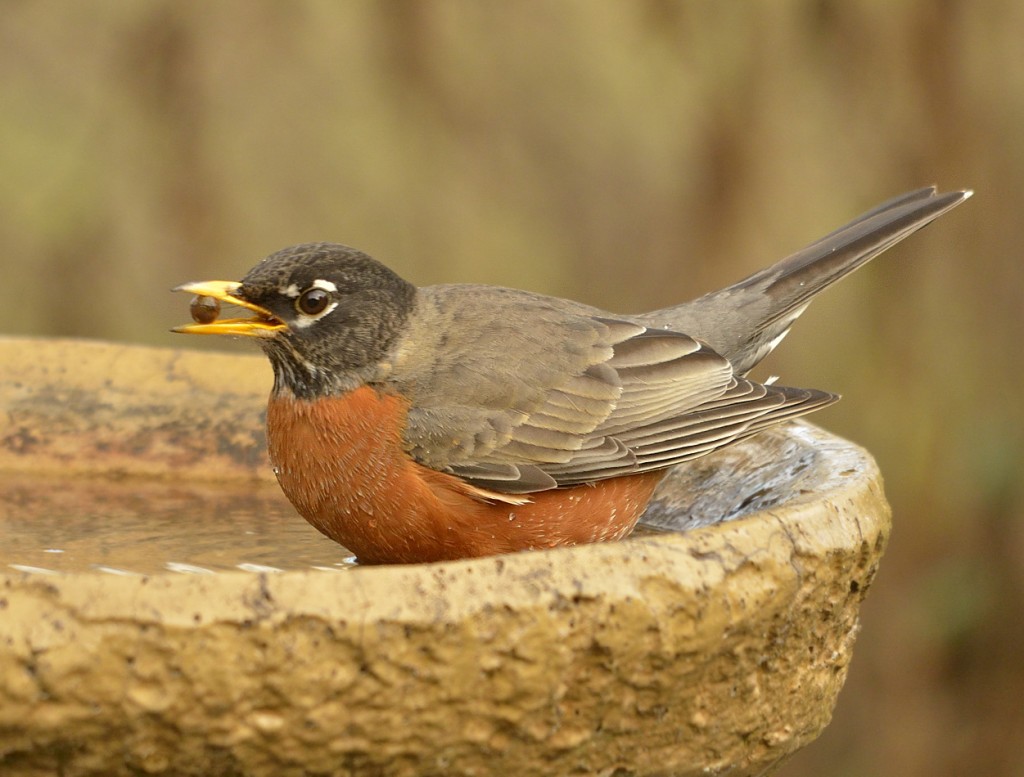
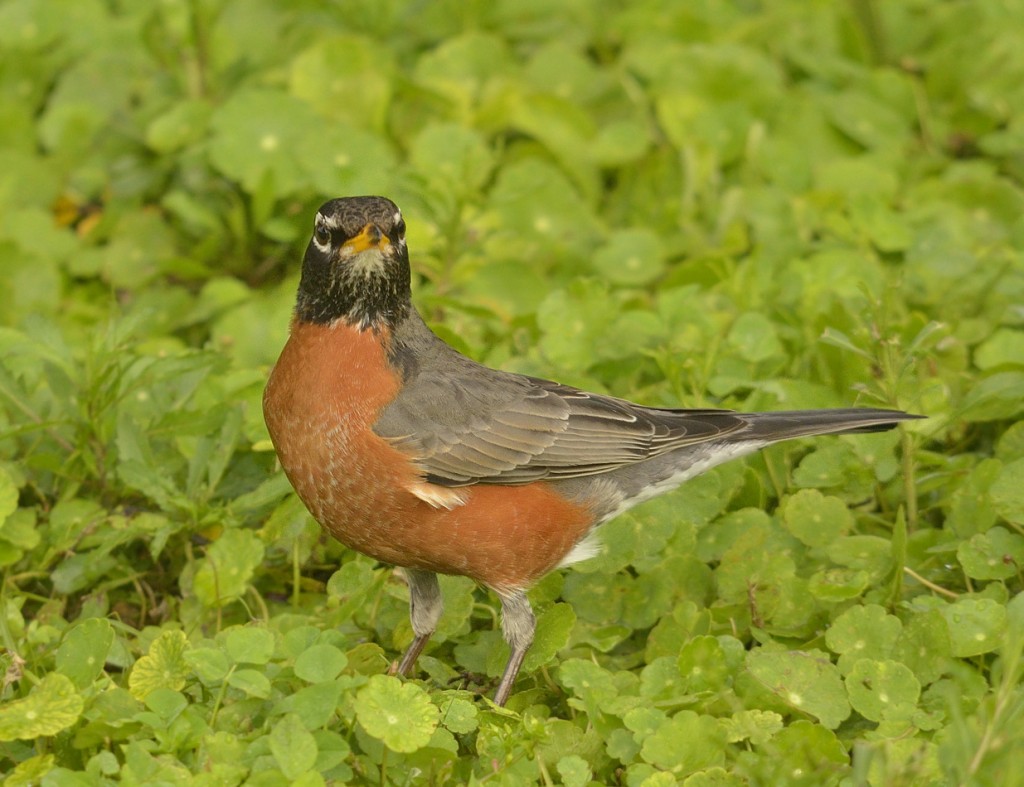
Pingback: Graded signals | Volusia Naturalist
Thanks for the detailed information about Robin behavior. The first time I noticed evening roosting behavior was in the suburbs of Chicago when I’d watch single robins arriving from all over the area to one particular wooded area every evening at sunset. But just a few days ago I saw for the first time the giant flocks you referred to in rural southern Louisiana. Flocks of thousands all joined together in and around a sugar cane field, one of the few left of the season. Together they easily amounted to millions. I thought at first they were starlings, because of the size of the flocks, but they were so quiet! I’ve never seen so many birds at once. The next day the sugar cane field was cut down, so who knows where all those millions of robins went. Maybe to Volusia to see you.
Pingback: Making peace with the mockers | Volusia Naturalist
Hello
I would like to enlarge one of these photos for my living room. “A small winter flock of Robins on the tree”
You are welcome to download the photo and print it, Faith.
I would like to use the image of the fecal sac removal for a scientific poster presentation. Would that be okay?
Thank you.
Sure. If you need a higher-res version, email me.
I live in a small town in Northern California, and the robins winter here as well. They have been here since November/December, but yesterday they moved “in town”. Trees filled with robins, electric wires filled with robins, robins on rooftops, and little city side yards packed full of robins. What a wonderful, beautiful day!